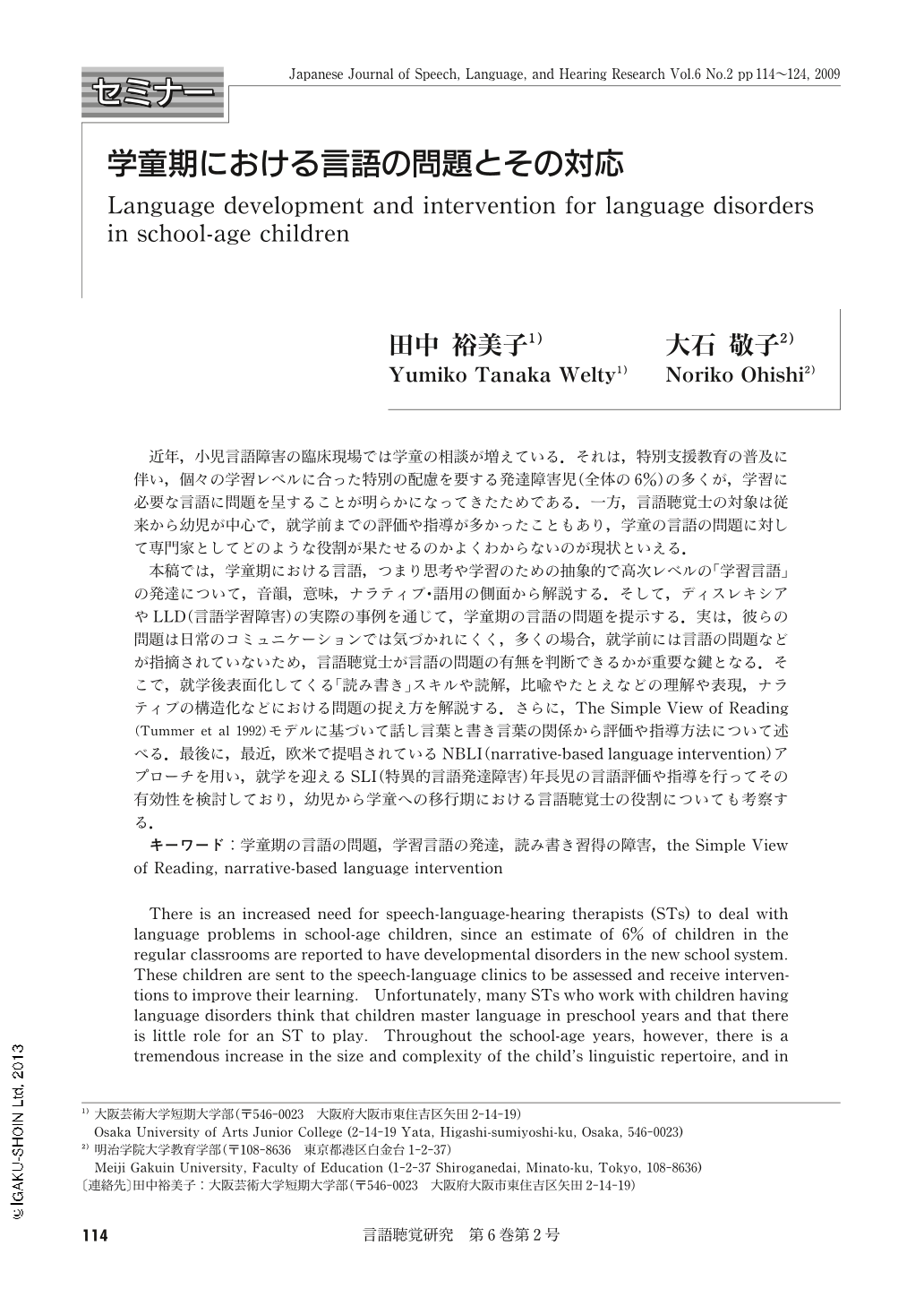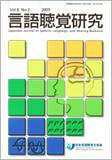Japanese
English
- 有料閲覧
- Abstract 文献概要
- 1ページ目 Look Inside
- 参考文献 Reference
近年,小児言語障害の臨床現場では学童の相談が増えている.それは,特別支援教育の普及に伴い,個々の学習レベルに合った特別の配慮を要する発達障害児(全体の6%)の多くが,学習に必要な言語に問題を呈することが明らかになってきたためである.一方,言語聴覚士の対象は従来から幼児が中心で,就学前までの評価や指導が多かったこともあり,学童の言語の問題に対して専門家としてどのような役割が果たせるのかよくわからないのが現状といえる.
本稿では,学童期における言語,つまり思考や学習のための抽象的で高次レベルの「学習言語」の発達について,音韻,意味,ナラティブ・語用の側面から解説する.そして,ディスレキシアやLLD(言語学習障害)の実際の事例を通じて,学童期の言語の問題を提示する.実は,彼らの問題は日常のコミュニケーションでは気づかれにくく,多くの場合,就学前には言語の問題などが指摘されていないため,言語聴覚士が言語の問題の有無を判断できるかが重要な鍵となる.そこで,就学後表面化してくる「読み書き」スキルや読解,比喩やたとえなどの理解や表現,ナラティブの構造化などにおける問題の捉え方を解説する.さらに,The Simple View of Reading(Tummer et al 1992)モデルに基づいて話し言葉と書き言葉の関係から評価や指導方法について述べる.最後に,最近,欧米で提唱されているNBLI(narrative-based language intervention)アプローチを用い,就学を迎えるSLI(特異的言語発達障害)年長児の言語評価や指導を行ってその有効性を検討しており,幼児から学童への移行期における言語聴覚士の役割についても考察する.
There is an increased need for speech-language-hearing therapists (STs) to deal with language problems in school-age children, since an estimate of 6% of children in the regular classrooms are reported to have developmental disorders in the new school system. These children are sent to the speech-language clinics to be assessed and receive interventions to improve their learning. Unfortunately, many STs who work with children having language disorders think that children master language in preschool years and that there is little role for an ST to play. Throughout the school-age years, however, there is a tremendous increase in the size and complexity of the child's linguistic repertoire, and in the use of the repertoire in conversation and narration. Paul (2007) refers to the language learned in school-age as "language for learning," that is characterized as being abstract, socially shared, non-literal, and de-contexualized.
In this article, we first describe the typical development in phonology, semantics, and narrative ability in school age. Secondly, we describe the language problems in school-age children, most of whom are not identified before school as having dyslexia or a learning disorder (LD) because their daily communication is fine. Thirdly, we present the Simple View of Reading model (Tummer et al, 1992) as a framework to assess and intervene with the children whose language problems extend across spoken and written modalities. Fourthly, we introduce the narrative-based language intervention (NBLI) model as a preventive intervention for 5-6 year-olds who have language weaknesses as seen in children with specific language impairment (SLI), but without cognitive or social problems. Finally, we discuss the important role of STs in helping school-age children with language-learning disorders.

Copyright © 2009, Japanese Association of Speech-Language-Hearing Therapists. All rights reserved.


